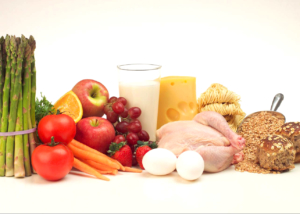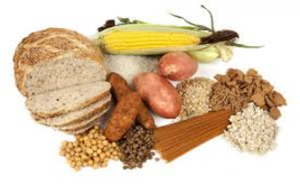Macronutrients consist of carbohydrates, proteins, and fats. These three nutrients are essential and play vital roles in our body's ability to perform. You may have heard of the “macro diet” or “flexible eating”. Both of these plans are based on the foundation of tracking your nutrition and hitting your individualized macronutrient goals each day.
There is no magic formula in determining your macro percentages. You may need to play around with your numbers over the course of a few weeks to find the goals that fit your needs. Even at that point, you may need to adjust your goals every few months to keep up with your training and race schedule.
There are many formulas available for calculating your caloric intake. Click on the link below to determine your individualized goal:
How to Calculate Appropriate Calories Per Day
Let's take a look at why carbohydrates, proteins and fats are so important and how you can configure your daily macronutrient and caloric goals.
_______________________________________________________________________
Carbohydrates provide the glucose used for energy. Glucose is stored as glycogen in muscles and the liver. Muscle glycogen provides the most readily available source of energy for working muscles. Carbohydrates should comprise of 45-65% of total caloric intake.
Best sources of carbohydrates:
Rolled oats, bananas, blueberries, oranges and other fruits, plain yogurt, whole grain pasta, breads and cereals, brown rice, sweet potatoes, lentils.
_______________________________________________________________________
Protein builds and repairs muscle, hair, nails, and skin. For low intensity or short exercise sessions, proteins do not act as a primary source of energy. However, as exercise duration increases, proteins help to maintain blood glucose levels. Protein should compromise of 10%-30% of total caloric intake.
Best sources of protein:
Grilled or baked chicken, fish, turkey, or lean beef, eggs, dairy products, beans, nuts and seeds.
_______________________________________________________________________
Fat is necessary to absorb fat-soluble vitamins (A,D,E,K) to provide essential fatty acids, protect vital organs and provide insulation. Fat also provides the feeling of satiety. It is a calorie dense source of energy. Fat should compromise 20-25% of total caloric intake. Saturated fats(cream, butter, fatty meats, certain oils) should compromise of no more than 10% of total energy intake.
Best sources of fats:
Olive oil, avocado, nuts, seeds, dairy products, fish, lean meats and poultry.
_______________________________________________________________________
Below is an example of a 1500 calorie/day diet; 40% carb/40%proten/30%fat:
Carbohydrates
1,500 calories x 40% carbohydrates = 600 calories of carbohydrates
600 calories / 4 calories per gram of carbs = 150 grams of carbohydrates
Protein
1,500 calories x 30% protein = 450 calories of protein
450 calories / 4 calories per gram of protein = 112.5 grams of protein
Fat
1,500 calories x 30% fat = 450 calories of fat
450 calories / 9 calories per gram of fat = 50 grams of fat
This means a woman who eats 1,500 calories a day would eat 600 calories (or 150 grams) of carbohydrates, 450 calories (or 112.5 grams) of protein, and 450 calories (or 50 grams) of fat per day.
_______________________________________________________________________
By tracking your nutrition on an app such as “myfitnesspal”, you will be able to see a snap shot of your daily caloric intake as well as your macro and micronutrients. Although at times tedious, tracking is a proven way to stay accountable and provide your body with the nutrition it needs to perform at the highest level.
If you are ready to start tracking, download the app and track your nutrition for the first 2 weeks without adjusting your macro or caloric goals. Next, use the formulas above to create realistic goals based on where you are now and where you want to be within the next 6-8 weeks. Adjust those goals accordingly as needed and try to be as consistent as possible while tracking. Check your macro percentages after each meal and plan your next snack or meal based on hitting your goals.
After a few weeks, you will have the hang of it and hopefully, you feel stronger and more energetic because your body is fueled correctly.*
*Mud Run Guide does not try to make health claims. Before embarking on a new diet consult your doctor. While the above information represents one way of eating it is important to work with your healthcare practitioner to find the best balance and diet for you and your needs.






Leave A Comment